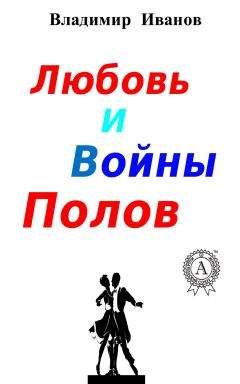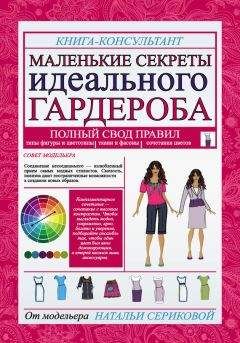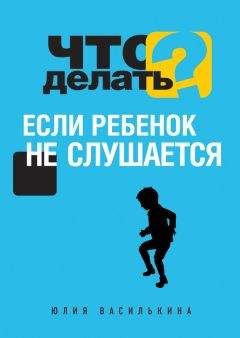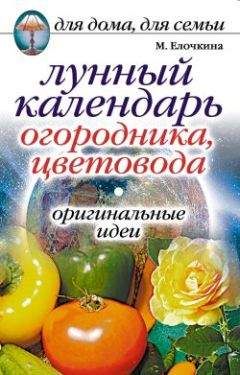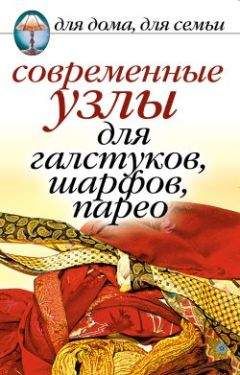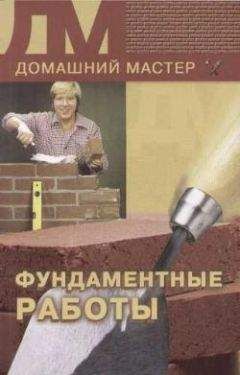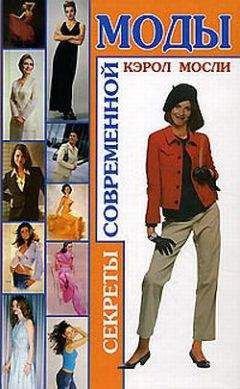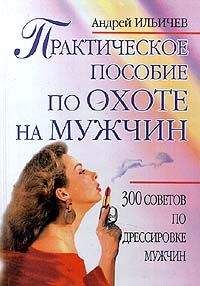Эльмира Хамматова - English for designers. Английский язык для дизайнеров
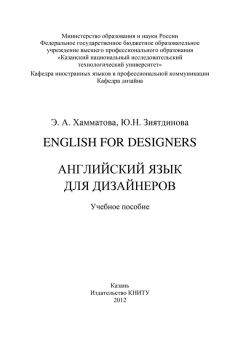
Все авторские права соблюдены. Напишите нам, если Вы не согласны.
Описание книги "English for designers. Английский язык для дизайнеров"
Описание и краткое содержание "English for designers. Английский язык для дизайнеров" читать бесплатно онлайн.
Учебное пособие способствует формированию коммуникативных способностей в профессиональной сфере дизайнеров и мотивированности обучающихся при изучении английского языка. Рассматривается история развития европейского костюма на протяжении XVIII-XXI веков, а также ассортимент одежды и ее стилевые особенности. Пособие содержит задания творческого и дискуссионного характера и задания, направленные на анализ конкретных ситуаций, с которыми может столкнуться будущий дизайнер.
→ «Я люблю, когда мода выходит на улицу, но не допускаю, чтобы она приходила оттуда». (Коко Шанель).
9. Прочитайте текст и озаглавьте его.
This period saw the final abandonment of lace, embroidery, and other embellishment from serious men's clothing outside of formalized court dress – it would not reappear except as an affectation of Aesthetic dress in the 1880s and its successor, the "Young Edwardian" look of the 1960s. Instead, cut and tailoring became much more important as an indicator of quality.
This was also the period of the rise of hair wax for styling men's hair, as well as mutton chops as a style of facial hair.
Breeches became longer – tightly fitted leather riding breeches reached almost to the boot tops – and were replaced by pantaloons or trousers for fashionable street wear. Coats were cutaway in front with long skirts or tails behind, and had tall standing collars. The lapels featured an M-shaped notch unique to the period.
Figure. Pierre Seriziat in riding dress, 1795. His snug leather breeches have a tie and buttons at the knee and a fall front. The white waiscoat is double-breasted, a popular style at this time. His tall hat is slightly conical.
Shirts were made of linen, had attached collars, and were worn with stocks or wrapped in a cravat tied in various fashions. Pleated frills at the cuffs and front opening went out of fashion by the end of the period.
Waistcoats were relatively high-waisted, and squared off at the bottom, but came in a broad variety of styles. They were often double-breasted, with wide lapels and stand collars. High-collared white waistcoats were fashionable until 1815, then collars were gradually lowered as the shawl collar came into use toward the end of this period.
Overcoats or greatcoats were fashionable, often with contrasting collars of fur or velvet. The garrick, sometimes called a coachman's coat, was a particularly popular style, and had between three and five short caplets attached to the collar.
Boots, typically Hessian boots with heart-shaped tops and tassels were mainstay in men's footwear. After the Duke of Wellington defeated Napoleon at Waterloo in 1815, Wellington boots, as they were known, became the rage; tops were knee-high in front and cut lower in back. The jockey boot, with a turned-down cuff of lighter colored leather, was correct for riding.
(From http://www.nationmaster.com)10. Составьте диалог «An interview with fashion designer», используя следующие выражения:
→ What is your impression of arts and fashion?
→ Where did you get the inspiration for your designs?
→ How do you keep up-to-date with your career?
→ What fashion trends interest you most?
→ What is “in” fashion for girls/boys this season?
→ Do you have a mentor?
→ And how about …?
→ What motivates you?
→ What can you say about …?
→ What are your weaknesses and strengths?
→ How do you manage working …?
→ What are your plans for the future?
Unit 4
NINETEENTH CENTURY
1. Прочитайте следующие слова вслух и переведите их письменно:
modernity, exponentially, buttons, empire, significance, bustle, purity, inventions, silhouette, curiosity, bust, waist, buttocks, posterior, suppression, rear, pleats, flounces, bows, lieu, apron, polonaise, hips, upholstered, fascination, crinolines, pad, distinctly, medieval, medieval, sleeves, prominence, cravats, lace, inserts, trim, embroidery, tucks, pleats, tulip, collars, bell, suits, fashionable, practical, variation, ties.
2. Прочитайте и переведите следующие глаголы:
to patent, to return, to influence, to define, to amplify, to exploit, to exaggerate, to reduce, to gain, to embrace.
3. Подберите эквивалентный перевод словосочетаний из колонки A в колонке В.
4. Прочитайте и переведите текст.
NINETEENTH CENTURYThe 1800s were a time of modernity. The needle trade grew exponentially due to technological advances. Mass production was possible because of inventions like Elias Howe’s sewing machine in 1846. Machines that specialized in sewing buttons making button holes, and knitting made large production runs a reality. Isaac Singer patented the first home-scaled sewing machine and distributed it widely. At the same time, standard paper pattern became available through mail order. Of great significance, the first modern department store, the Magasin au Bon Marché, opened in Paris as early as 1852; across the Atlantic, Wanamaker’s opened in Philadelphia in 1861.
By the 1820s women’s fashion had moved away from the classically influenced empire style and returned to the corseting and full skirts of the previous era. In the last quarter of the nineteenth century, however, it was the bustle that defined fashion. The conservative Victorian era is known for a prudish societal focus on moral values, especially female purity. Ironically, the fashionable silhouette of the day, although covering most of woman’s body, amplified the hourglass proportions of the bust, waist, and buttocks, eroticizing and idealizing an extreme version of the feminine form. Some liken the allure of this extreme silhouette to the interest in a woman known as Saartjie “Sarah” Baartman, who was exploited as a sideshow attraction called the Hottentot Venus. Baartman was considered an exotic curiosity because of the exaggerated scale of her posterior in relationship to the rest of the frame, a genetic characteristic of the Khoisan people of South Africa, in particular the women. Thus, a fascination with novelty and the uneasy suppression of sexuality could be seen to come together in the Victorian bustle.
The early bustle of 1870s can be described in terms of the lightness of material and lack of decoration. It was often created through the manipulation of the fabric that was draped in the rear, using pleats, flounces, and bows. The front of the silhouette had the appearance of an apron. For a short time, from 1878 to 1883, the bustle disappeared in lieu of a more natural, flat-backed dress. The cuirass bodice, a long waisted bodice that extended below the hips, and the polonaise, a princess sheath dress, achieved this slim shape. The period from 1883 to 1893 constituted the revival of the bustle. This new bustle had the look of an upholstered shelf, due to its large, almost horizontal protrusion. It was further accentuated with heavier fabrics and more ornate decoration. By the end of the 1800s, though, the bustle had been reduced to a small pad that carried into the Edwardian era.
Parallel to mainstream fashion, a movement emerged in the 1860s and 1870s known as artistic and, later, aesthetic dress. In protest against crinolines and restrictive corsets, as well as the idea of mass-produced clothing, a group of artists, writers, and actors, most famously associated with Dante Gabriel Rossetti and William Morris, promoted this looser, distinctly bohemian style that embraced many medieval and Renaissance sensibilities.
With the decline of the bustle, sleeves gained more prominence, culminating in the mid-1890s with gigantic leg-o’muttons offset by a tiny waist. The American artist Charles Dana Gibson captured the ideal in his satirical illustrations of the modern woman. Although she became an icon of the era, the “Gibson Girl” was meant to caricature the sense of competition, independence, and athleticism that defined this new woman – not necessarily traits that were encouraged for genteel ladies. The embellished blouse became a signature of the Gibson Girl, featuring details like lace inserts and trim, embroidery, appliqués1, faggoting2, tucks, and pleats. She also sported shirt collars with ties, bows or cravats. She wore these tops over skirts shaped like a bell or an inverted tulip. Tailored travelling suits were a fashionable and practical variation of the new look.
(From the book “Form, Fit, and Fashion” by Jay Calderin)5. Ответьте на вопросы:
→ What do you know about Saartjie Baartman?
→ What do you know about Victorian era?
→ Can you describe fashion of the 19th century?
→ Who became an icon of the era in the end of the 19th century?
6. Переведите следующие предложения письменно.
1. В 1860-е годы в моду вошли кринолины из овальных обручей, которые создавали определенный силуэт юбки.
2. Он изменил пропорции платья с кринолином, предложив завышенную линии талии и отказался от пышных складок на талии.
3. Женский костюм имел профильный силуэт и множество драпировок.
4. Костюм стиля модерн постепенно изменялся, и становились модными съемные рукава до локтя из гипюра.
5. Характерной чертой силуэта женского платья является значительно расширенная, гротескная линия плеч вследствие очень пышных рукавов «фонарик».
7. Переведите следующие слова, используя пример: buttons, pleats, flounces, crinolines, embroidery, faggoting, tucks, collars, bows, cravats, ties, tulip, trim, blouse, sleeves, suits.
8. Прочитайте и переведите текст письменно.
OUTERWEARRiding habits consisted of a high-necked, tight-waisted jacket with the fashionable dropped shoulder and huge gigot sleeves, worn over a tall-collared shirt or chemisette, with a long matching petticoat or skirt. Tall top hats with veils were worn.
Shawls were worn with short-sleeved evening gowns early in the decade, but they were not suited to the wide gigot sleeves of the mid 1830s.
Full-length mantles were worn to about 1836, when mantles became shorter. A mantlet3 or shawl-mantlet was a shaped garment like a cross between a shawl and a mantle, with points hanging down in front. The burnous4 was a three-quarter length mantle with a hood, named after the similar garment of Arabia. The paletot5 was kneelength, with three cape-collars and slits for the arms, and the pardessus6 was half or three-quarter length coat with a defined waist and sleeves.
For evening, voluminous mantles of velvet or satin, with fur trim or fur linings in cold climates were worn with the evening gown.
(From the Survey of Historic Costume by Tortora, Phyllis and Keith Eubank)9. Составьте рассказ о моде 19 века, включающий в себя следующее:
→ Идеал красоты
→ Виды и формы одежды
→ Мужская одежда
→ Женская одежда
→ Обувь
→ Головные уборы, прически, украшения, косметика
Unit 5
EARLY TWENTIETH CENTURY
1. Прочитайте следующие слова и словосочетания вслух и переведите их письменно:
extent, editors, trim details, assumptions, seamstresses, customers, competitors, hourglass-shaped style, assistance, conspicuous, consumption, incredibly, shorter-skirted, upholstered, painstakingly, unthinkable, hips, bosom, indispensable, ribbons, feathers, lace, pantaloons, turbans, evident, felt hats, soberly, superimposing, shimmers, flimsy, fluid lines, diaphanous, imperatives, headgear, immense, gossamery, clinging, sheath, shades, cochineal, devotees, engagements, circumstances, clouds of tulle, undulate, mid-calf, maid.
Конец ознакомительного фрагмента.
Текст предоставлен ООО «ЛитРес».
Прочитайте эту книгу целиком, купив полную легальную версию на ЛитРес.
Безопасно оплатить книгу можно банковской картой Visa, MasterCard, Maestro, со счета мобильного телефона, с платежного терминала, в салоне МТС или Связной, через PayPal, WebMoney, Яндекс.Деньги, QIWI Кошелек, бонусными картами или другим удобным Вам способом.
1
appliqué (фр.) – аппликация
2
faggoting – вышивание мережкой (узор образуется за счет собирания отдельных нитей в пучки)
3
mantlet – мантилья (короткая накидка, короткий плащ)
4
burnous – бурнус (арабский плащ; просторное женское пальто)
5
paletot (фр.) ['pæltəu] – свободная, широкая верхняя одежда (пальто, накидка)
6
pardessus (фр.) [pardəsy] – пальто
Подписывайтесь на наши страницы в социальных сетях.
Будьте в курсе последних книжных новинок, комментируйте, обсуждайте. Мы ждём Вас!
Похожие книги на "English for designers. Английский язык для дизайнеров"
Книги похожие на "English for designers. Английский язык для дизайнеров" читать онлайн или скачать бесплатно полные версии.
Мы рекомендуем Вам зарегистрироваться либо войти на сайт под своим именем.
Отзывы о "Эльмира Хамматова - English for designers. Английский язык для дизайнеров"
Отзывы читателей о книге "English for designers. Английский язык для дизайнеров", комментарии и мнения людей о произведении.








